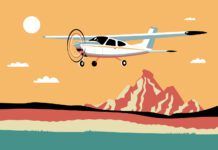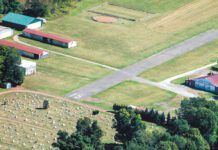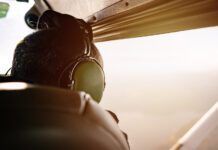One July, I was flying an Aerostar from Sherbrooke, Quebec to Kitchener, Ontario, passing through Toronto’s airspace when I heard an RV6 pilot with a thick southern drawl make a call that went something like this:
RV6: “Toronto Center, this is RV6 N1234 VFR at niner thousand, five hundred, I’d like to report an insect strike. I mean, we just entered Canadian airspace and this here bug was huge. I mean, it is smeared all over my windscreen, and man, it’s a reeeal mess.”
Toronto Center: “RV6 N1234, do you require any assistance?”
RV6: “Naw, but I just wanted you to know that you all have got real big bugs here in Canada, and they’re flyin’ real high.”
Toronto Center (chuckling): “Roger N1234, we will pass that on.”
Frank Lenzi
Cambridge, Ontario
I fly a rather obscure aircraft for the Coast Guard: the HC-144, a twin turboprop about the size of a Dash 8. Once, just after upgrading to aircraft commander, I needed to pick up a passenger from a field we don’t normally visit.
While taxiing to the FBO, ground suddenly gave us a phone number to call. My copilot and I looked at each other in surprise and started reviewing everything we’d done.
Inside the FBO I could barely dial the number in my nervousness. The ground controller picked up and said, “Oh hey, I just had a question for you. What type aircraft is that?”
It took another 20 minutes for my heart rate to go back to normal.
LT Nathan Souleret
Coast Guard Air Station, Miami, FL
Your recent OTA reminded me of a flight several years ago with my cousin’s daughter and her husband in the back seat during a scenic flight around the Dallas area. After the flight I asked her if she enjoyed it. Her reply was that the flight was nice and lots of fun, but she was concerned that I had to read the “instructions” on my kneeboard as I went through checklists during the flight.
Karl Thomas
Mesquite, TX
I was returning to my home base inside the Washington DC Special Flight Rules Area (SFRA), when I heard the following transmission.
Potomac Approach: “Cessna 1234 you’re outside of the SFRA, squawk VFR, frequency changed approved. Would you like flight following for the rest of your flight?”
Cessna 1234: “Yes.”
The airplane belongs to a flight school inside the SFRA with a lot of foreign students. English was not this student’s primary language.
Potomac Approach: “Say destination and altitude.”
Cessna 1234: “DMW at 3000 feet.”
DMW, Carroll County Airport, is about 15 miles north of the SFRA and is a common training area for students based inside the SFRA.
Potomac Approach: “Was that DFW, Delta Foxtrot Whiskey?”
Cessna 1234: “That’s correct.”
Potomac Approach: “Cessna 1234, confirm you’re going to Dallas Fort Worth?”
Cessna 1234: “That’s correct.”
Potomac Approach: “Cessna 1234, contact Potomac Approach on 128.7.”
I was getting ready to clarify the misunderstanding with both the Cessna and Potomac when the flight instructor in Cessna 1234 apparently woke up.
Cessna 1234 (a different voice): “Cancel the flight following, we don’t need it. We’re going to Carroll County.”
Name withheld by request
On a recent trip into the Washington, D.C. area, I was assigned a vector that took me directly toward the middle of the P-40 Prohibited Area surrounding the Presidential Retreat at Camp David. A quick check of the chart confirmed that I should be okay with my assigned altitude of 5000 feet and the upper limit of the Prohibited Area being at 5000 feet as well.
Following the “when-in-doubt, ask” axiom, I decided for my own peace of mind to make sure the controller and I were on the same page.
Me: “Potomac Approach, 7639 Foxtrot. Just confirming that you know that I’m headed for P-40 and that I’m good at this altitude.”
Potomac Approach: “39 Foxtrot, you’re fine at 5000. I don’t want to end up on the evening news, either!”
John Moore
Vero Beach, FL
Please send us your cleverest or most embarrassing moment on the radio—or your favorite fix names or airport names—with a subject of “OTA,” to [email protected]. Be sure to include your full name and location.




